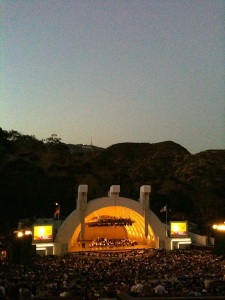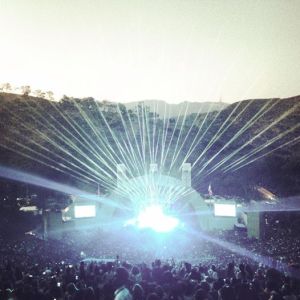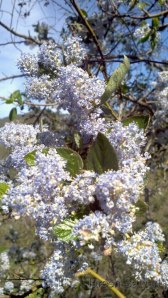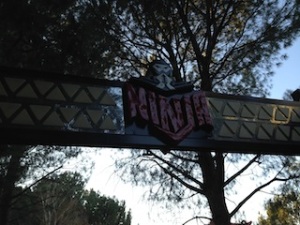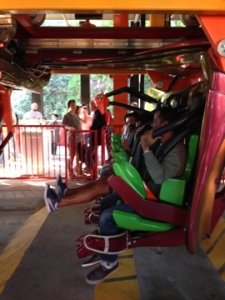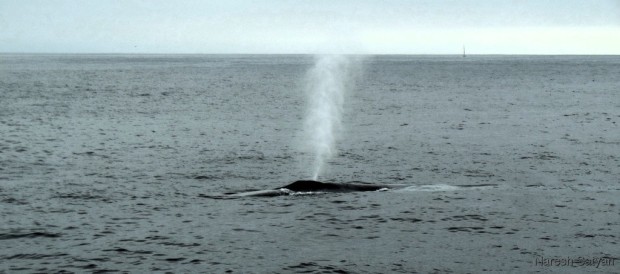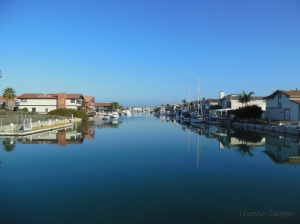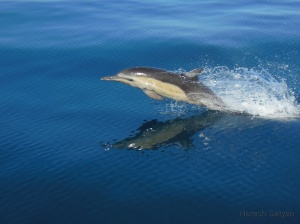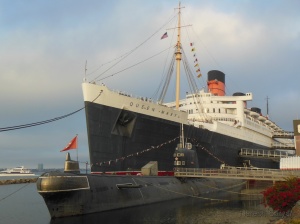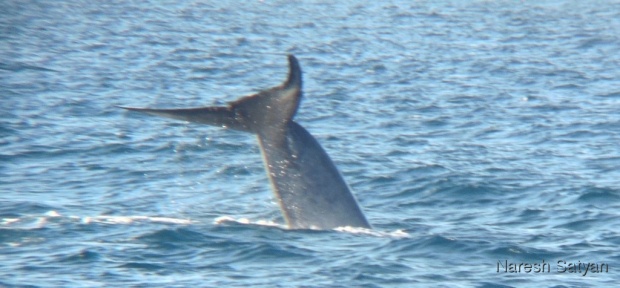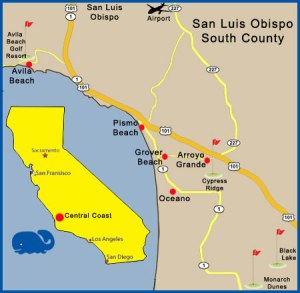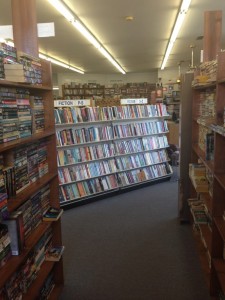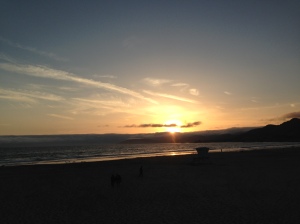 “We have three seasons here at Crater Lake: July, August, and winter”
“We have three seasons here at Crater Lake: July, August, and winter”
– Crater Lake Trolley operator
This started out during a busy summer period—I wanted a break, and I also knew I wanted to go on a train ride. There wasn’t much planning—I figured I’d take an extra day off the following weekend for a three-day train trip. The idea was to spend about a day each way on the train, and one day at the destination. Looking up the Coast Starlight schedule, a natural destination given the timing was Crater Lake—the only National Park in Oregon, and a place I had never visited before. It is a simply stunning place, and this last-minute trip has been one of my most memorable trips. It had everything: two full days and nights on the train on one of the most beautiful train routes ever, a narrated trolley tour around the caldera forming the deepest lake in the United States, and a nice little hike on a mountain at the lake edge.
Route and itinerary: The Amtrak Coast Starlight serves Klamath Falls, a nice sleepy little town about 65 miles from Crater Lake. The schedule between Los Angeles and Klamath Falls is pretty convenient—the train leaves LA at 10:10 am and gets to Klamath Falls the next day around 8 am; and on the return journey, it departs Klamath Falls at 10 pm, getting back to LA the next day at 9 pm.
The connection between Klamath Falls and Crater Lake is via the Crater Lake Trolley. When I visited in 2013, they had a trip leaving Klamath Falls for Crater Lake at 9:30 am, and a return trip leaving Crater Lake at 5 pm. The ride is about an hour and a half each way. Just perfect. This connecting trolley ride can be booked via Amtrak as part of the trip from LA.
(In 2014, the trolley website states that the return trip is at 3 pm. This would give you about four hours at the rim of the lake, more than enough time to take a tour around the lake and for sightseeing, but not enough for hiking, and you’ll have five hours to kill in Klamath Falls. It may be worth calling the trolley company to check if they have a later return trip as well. I don’t think they really make the effort to have up-to-date information on their website—you’ll know what I mean when you visit there, everything is so relaxed and quaint. If you have more time to spare, consider staying a night in the Park. The most convenient and picturesque location is the Crater Lake Lodge on the rim. Other options are to camp or stay in the cabins at Mazama village—you’ll have to ride the trolley to and from the rim, the same trolley that goes to Klamath Falls—or find accommodation in Klamath Falls.)
Day -4: Amtrak ticket counter at Union Station, speaking to the nice lady.
“I’d like to purchase a ticket to Crater Lake for next weekend please.”
“Where’s that? I don’t think we go there.”
“Crater Lake. I’d take the Coast Starlight.”
“I don’t think the train goes there.” She turns to the woman at the next counter. “Do you know this place called—what was it you said?”
“I take the train to Klamath Falls and switch to a connecting bus,” I inform her. “C-R-A-T-E-R L-A-K-E.”
She types it in. “Well, what do you know? Here it is. Crater Lake National Park. I had never heard of it. Is it like a big park? Is it nice up there?”
“Yes, I think it is the deepest lake in the country. I’ve never been there, looking forward to this trip. It is supposed to be really beautiful.”
“I think I’ll go there for my next vacation.”
“Yes you should!”
I hand her my ID for the tickets. She looks at it.
“Aww, you’re a baby!”
Day 1: I’ve found out that my good friend and fellow train-lover Shamanth is going to be on the same train as me—he’s going as far as San Francisco. I haven’t seen him for many years, so it will be nice to catch up again. We check in at Union Station an hour before the train departs. Technically, we’d be in different compartments because we are going to different places, but the conductor assigns seats together for us. Los Angeles is celebrating her birthday as we walk to a deserted Olvera Street for breakfast before the train leaves. Huevos con nopalitos, yum!
The Coast Starlight route in Central California has to be one of the most beautiful train rides in the world. The stretch from Ventura to San Luis Obispo, hugging the Pacific coast, has the most incredible views, especially from the Observation car.

Santa Cruz Island from the Coast Starlight
Leaving San Luis Obispo, the train climbs up to the top of the Santa Lucia range, climbing 1000 feet in 11 miles. The old Anza expedition took two days to make this climb, the train takes a winding 45 minutes at a 3% grade, and cars on the neighbouring 101 Freeway take 10 minutes up the 7% Cuesta grade.
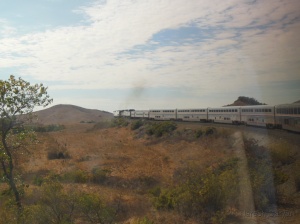
Climbing up from San Luis Obispo to the top of the Santa Lucia range.
Shamanth opts to spend the reminder of his ride in the beautiful observation car. I will be riding back on a Monday with far fewer crowds, and there will be more time to spend in that car. So I go back to my comfortable seat, get some work done and read a book.
Meals on the Coast Starlight can be some of the most interesting parts of the journey. The full-service dining car has seating at tables for four, and they have to feed an entire train at meal times. All seats must be filled, so as the dining car attendant puts it, you “come down for dinner, and leave with new friends.” Over the years, I’ve had shared lunch or dinner with all sorts of people travelling on the train: a British couple—a retired carpenter and his wife—returning from Alaska as part of their world trip, the head of a local bus drivers’ union going to a union conference, an exotic dancer at Las Vegas going to meet her family, an old man who had moved to Mexico and coming up to meet his estranged son in the States, a couple from California who shared their secrets of going on cheap trans-Atlantic cruises (go in the opposite direction, off season), parents talking about their children’s accomplishments with pride, an old woman who used to live on a farm and talked about not giving the cows too much room to run around, because the meat would become stringy, …
Day 2: Shamanth got off last night at San Francisco, and I had a really comfortable night’s sleep as the train made its way through northern California towards Oregon. Can’t really complain about the coach seats. Mine will be the first stop of the morning, just past the Oregon border. I wake up as the train is making its way through a beautiful pine forest, and the rays of the morning sun light up the gorgeous Mount Shasta to the right of the train.

Mount Shasta at sunrise
The train passes by green agricultural fields with clouds of flying blackbirds, and pulls into the Klamath Falls station about an hour early.

Amtrak Coast Starlight at Klamath Falls, OR
Since I have a couple of hours to kill before my trolley connection, I walk around the little town, mostly deserted early on a Sunday morning. The Klamath County Museum looks like a neat place to visit on an extended trip, but it is closed today. I enjoy looking at their outdoor exhibits, including a volcanic tree mold: lava flows around a tree and incinerates it, but the tree lasts just long enough for the lava to cool, leaving behind a very cool stone with a tree-shaped hole in it!
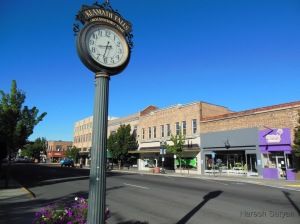
Sleepy Klamath Falls on a Sunday morning
I walk back to the train station to connect to my trolley ride. A lady who came in on a motorbike is at the ticket counter, and there are one or two other people, but the station is mostly empty. Motorbike lady walks up to me and pulls out a note from a bunch in a ziploc bag. “I want you to have something. It is not religious, very inoffensive. Have a good day!”

So it is.
Crater Lake: The trolley ride up the mountain is scenic, and lasts an hour and a half. The trolley operator is very nice to his three passengers (me and another couple who are staying a few nights in Klamath Falls). I hope more people ride the trolley, and keep this service going! The ride goes past the beautiful upper Klamath Lake, with hundreds of waterbirds, and up to the rim of the caldera that forms Crater Lake. We’re having perfect weather for the beginning of September: clear skies, no winds, and a forest fire in the distance from a week ago has died down, leaving us with perfect visibility. We make a couple of stops along the way: the first one, about halfway in, is at the Trolley garage in a beautiful green rural property next to a flowing stream. This stop is so that the driver can wash off the bugs splattered on the front window. These are the infamous Klamath midges, though the driver’s colourful story about their origin seems to have been a little imaginative. The second stop is at the entrance to the National Park. We are told the trolley doesn’t usually make a stop there, but he is stopping for us as a treat, because we are ahead of schedule. I am not big on pictures next to signs, but the driver is so nice to offer that I get one of myself next to the big signboard. Finally, we stop at Mazama village and the Post office to pick up campers going up to the lake, and the National Park Service ranger who serves as a narrator on the trolley tours of the lake.
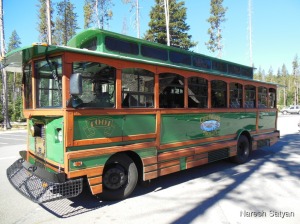
The beautiful Crater Lake Trolley
Up on the rim, and the first view of the lake just takes my breath away. This is no exaggeration, the pure blue colour of the lake is something everyone should see once in their lifetime.

First view of Crater Lake
The first business on arrival is to pay for my noon trip on the narrated trolley tour around the rim of the lake. I’ve made a reservation before I left Los Angeles. Reservations are not necessary, but my trolley is almost full, so it certainly helps to have one. They have four to six tours daily, lasting two hours each, going all the way around the lake, and narrated by a Park Service ranger. Our ranger is very informative, teaching us about the lake, its history, geology, its importance to native Americans, the wildlife, the water etc. I highly recommend this tour, there are few better ways to spend $25.
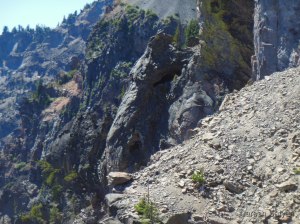 Devil’s Head |
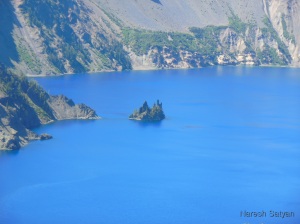 Phantom Ship |
After the trolley tour, I have about 2–3 hours left before my ride back, and I’m itching to go hiking. The cafe is quite full, and hiking is more important than eating :), so I buy a couple of bars of huckleberry chocolate and hit the trail. The hike I have time for is a short and moderately steep climb up to Garfield Peak from Crater Lake Lodge. The trail climbs 1000′ over 1.7 miles along the edge of the caldera. It is a beautiful hike, with the trail closely hugging the steep caldera rim, and buzzing with loud cicadas and pretty wildflowers. On this clear day, I’m rewarded with fantastic views of the lake and the surrounding forests and mountains. The altitude and the lack of food make this hike slightly more challenging than I had expected, but I make it down with plenty of time to spare before my 5 pm ride down to Klamath Falls.

Crater Lake and the Garfield Peak Trail
Thanks to the ranger, I also learn a lot about the Clark’s nutcracker – whitebark pine mutualism on this trip.

9500 ft Mt. McLoughlin, 35 miles away. On the whitebark pine tree is a Clark’s Nutcracker carrying pine nuts.
We seem to have lost the other couple who came up to the mountain with me, and the operator tries to find out what happened to them. Eventually, we assume they must have gone down on an earlier trip, so that leaves just me and the driver. The drive down is uneventful, except for the one time we have to brake sharply to avoid a nutcase who makes a sudden U-turn on a highway with a big trolley behind him. I’m hungry, so I ask the driver for suggestions for dinner. He drops me off at the Creamery, a nice little microbrewery at the location of an old dairy plant. Dinner is great, and I suppose the beer is good too. Walking back to the train station, I’m easily amused by this motel sign:
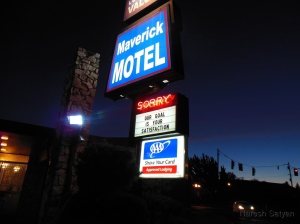
Oh, no need to apologize
Day 3: After another good night’s sleep on the train, helped by the beer and all the physical activity of the past two days, I wake up in Oakland, with the Golden Gate bridge not that far away on the right. The train pulls into San Jose, and I decide to spend most of the remainder of this day in the Observation car. South of San Jose, the Coast Starlight follows the Juan Bautista de Anza National Historic Trail, and on select days, the Trails and Rails program has volunteer docents in the observation car between San Jose and Santa Barbara, sharing the story of the Anza trail and describing the sights along the route. Today is the last day of the season with the docents on the train, and these ones are simply superb. The volunteers are from the South Coast Railroad Museum – go check them out!
(As an aside, the museum also has private train rides to San Luis Obispo from Santa Barbara on some historic railroad cars, if you want a train-focused one day excursion to Grover Beach along the route Mythili talked about. They add a couple of extra cars to the Pacific Surfliner or Coast Starlight between these stations.)
 Stenner Creek trestle near San Luis Obispo, longest trestle on the route |
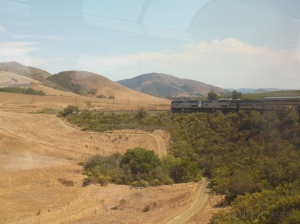 Horseshoe bend, where you can see both the front and back of the train from the window |
 Coastline at Vanderburg Air Force Base |
 Train on the bluff |
Lovely ride back, down the hill and past the famous horseshoe bend into San Luis Obispo, and along the coast—the train goes through Vandenburg Air Force Base with its ICBM launch sites and satellite tracking antennae and beautiful coastline, parts that you cannot access if you’re not on the train—back to Los Angeles. Great trip!
-N
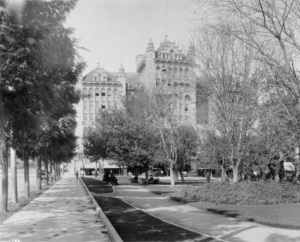

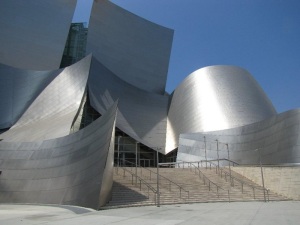
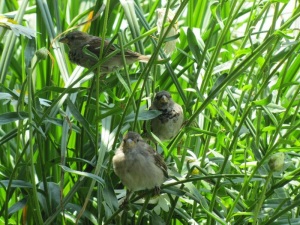
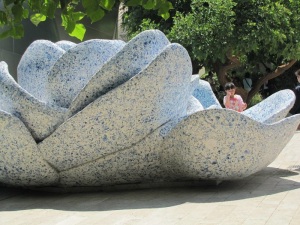





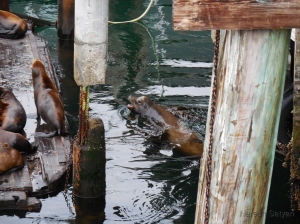

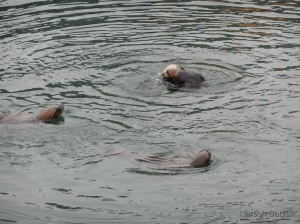
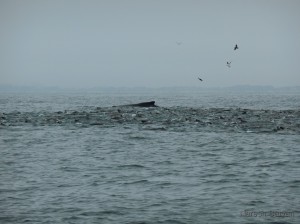

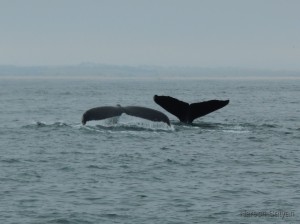
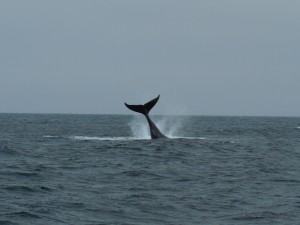



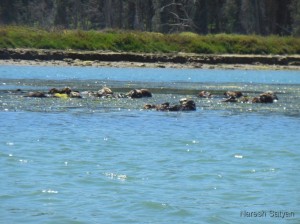

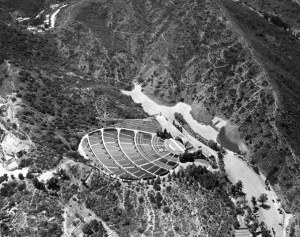 Aerial view of the Hollywood Bowl. Courtesy of the
Aerial view of the Hollywood Bowl. Courtesy of the 

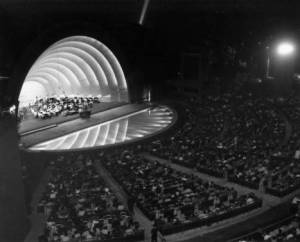


 My friends sitting comfortably on the wooden benches.
My friends sitting comfortably on the wooden benches.